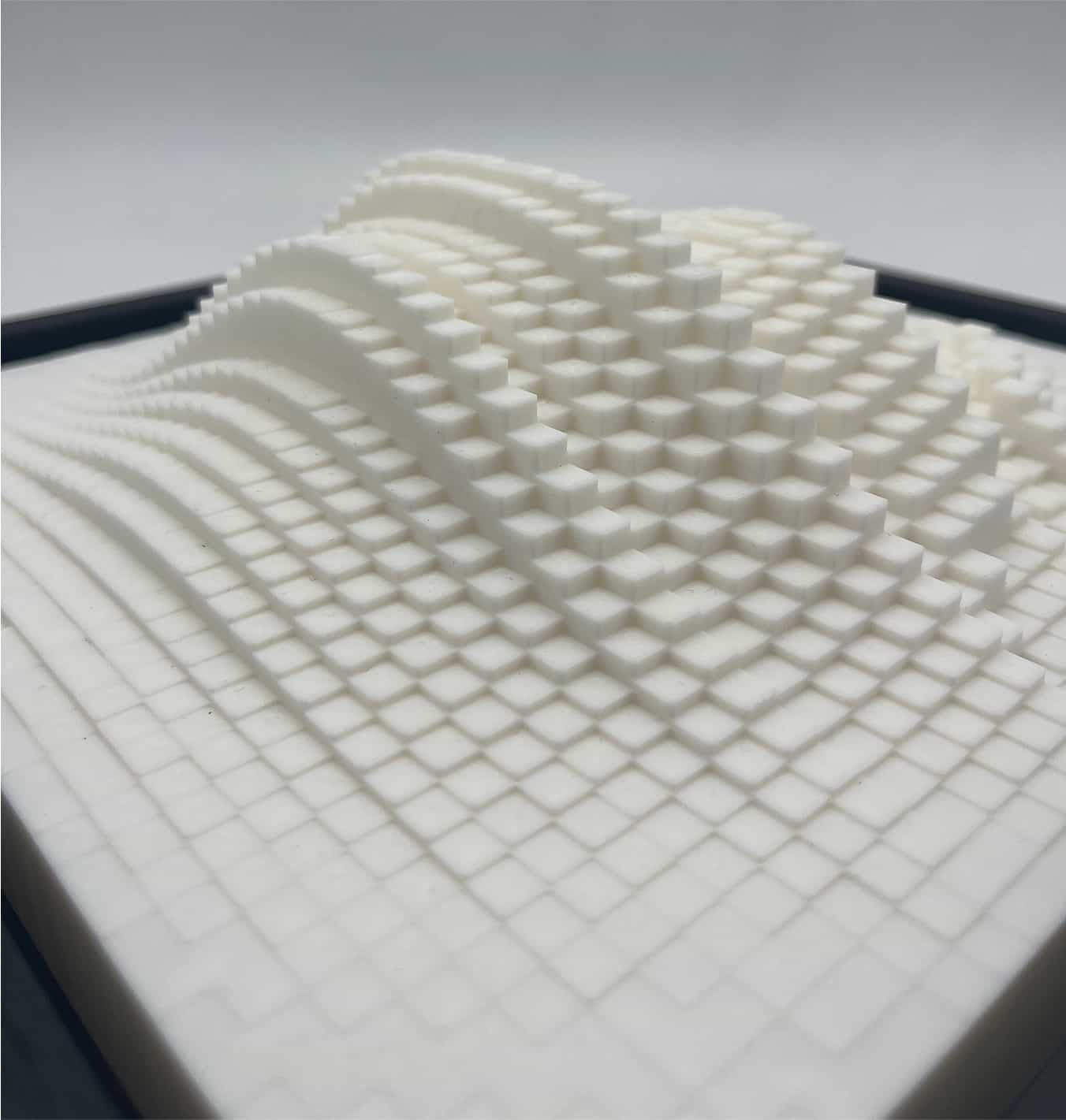


A Moment in Space
A moment in Space is a study into the visualization of algorithms in physical form.
In our daily digital lives, we are surrounded by visual algorithms, enhancing or mimicking the physical world. From the post-processing of the photo's we take, to the digital landscapes seamlessly weaving out as we explore an open world game. We see the results of these algorithms, but the algorithms themselves often remain hidden.
These algorithms on their own, can create complex and visually interesting results. They can generate vast and often endless unique sequences depending on which input or trigger they receive. "A Moment in Space" captures this, revealing their -raw- version, where it is otherwise masked and blended into a final product.
This series highlights the interplay of two of those digital building blocks, wobbly functions and Perlin Noise and. Both coming from completely contrasting sources:
On the one hand we have a basic sine function, the most stable an common wave in our known universe. To make this sine wave come to life, it is layered and modulated by other sine waves. The resulting wave create the organic base texture of the work.
The second algorithm, Perlin noise, starts from the other side of the spectrum: complete randomness. What makes Perlin noise special is that this chaos is tamed and controlled. Doing so, it gained two properties making it extremely suitable for applications like generating terrain in games to creating natural looking textures. First, every output generated, is relative to the previous output. This makes for a controlled, smoother randomness as opposed to a completely random noise function. Secondly, Perlin noise will output exactly the same, seemingly random, output giving the same input variables, making it suitable for creating scalable and reproducible works.
These two base functions are layed out in 3D space, where they interact with eachother to form a unique and ever changing landscape. The work is then captured in a single frame, freezing A Moment in Space.




